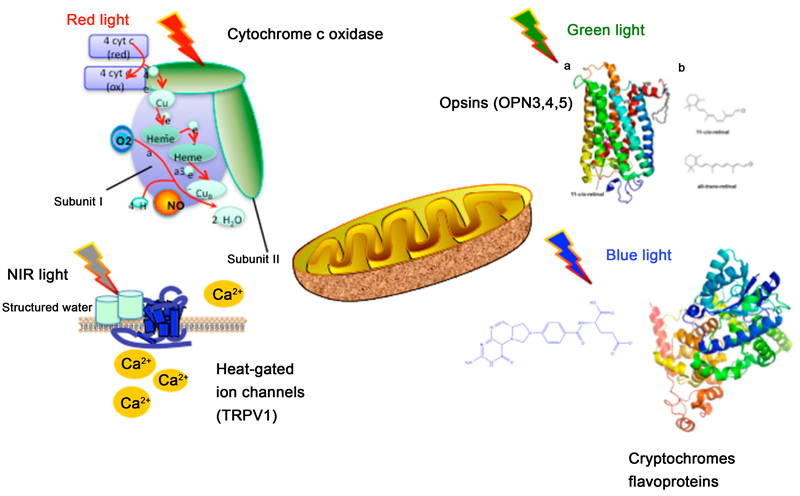Case Studies
- Home
- Case Studies
- Photobiomodulation Therapy for Attention Deficit Hyperactivity Disorder (ADHD)
Photobiomodulation Therapy for Attention Deficit Hyperactivity Disorder (ADHD)
Introduction:
A growing amount of research shows how photobiomodulation (PBM), also known as low-level laser therapy, can treat dementia or Alzheimer’s disease, traumatic brain injury (TBI), and other disorders related to the head, like ADHD. Treatments like these have been used for a number of years to address chronic pain issues in patients dealing with significant everyday struggles.
It has been shown that LLLT can provide relief from ADHD symptoms with only a single treatment without any need for pharmaceutical intervention. Numerous case studies have been published on this topic describing severe traumatic brain injury and focusing specifically on dementia, Alzheimer’s disease, and PTSD, which suggests it may be an effective therapy option for these illnesses as well.
We are still very much beginning to understand how low-level laser therapy affects brain function. Our work with traumatic injuries has been recent. However, three case studies have already shown great success for disorders like dementia and PTSD, which indicates it may also be an effective treatment option for ADHD.
Background:
The roots of ADHD are still being explored, but it is believed that variations in neurotransmitter levels can contribute to the severity of symptoms. For example, dopamine. Lower dopamine levels in the brain might make it difficult for someone to keep attention on a task or see it through to completion because dopamine aids in concentration and rewards the brain for finishing activities. It has been theorized that dopamine transporter proteins, which operate to remove dopamine from the brain, are present in greater numbers in people with ADHD as a result of genetic variations.
Study Preparations:
This study will investigate the efficacy of photobiomodulation for ADHD. The researchers believe this treatment could relieve many symptoms associated with the disorder, including restlessness and difficulty concentrating. If successful, they plan to publish their work in an academic journal soon after completion. (Ref. Link 1)
This is a surprising finding, as traditional assumptions about how ADHD affects cognitive function have been challenged. While stimulants like Ritalin or Adderall improve certain aspects of your brain’s performance in specific tasks, they also come with downsides, such as increased heart rate and blood pressure.
Method:
Low-level laser therapy (LLLT) is a non-invasive therapy that uses light to treat injuries and pain. It works by directing red and/or near-infrared rays from devices such as lasers and LEDs (light-emitting diodes) onto one part of your body at a time. Photobiomodulation is a process that is initiated by LLLT. This process can lead to many conditions where there was previously inflammation, tissue damage, etc., into healing quickly with few side effects. These treatments do not involve drugs or invasive procedures like surgery, hence, making them remarkably free from side effects and generally recognized as safe by the FDA. (Ref. Link 3)
One of the first laws of photobiology is that a photon must be absorbed by something to have any effect. Specific molecular chromophores must absorb it to have any biological effect. The three different types (blue, green, and red) are shown in Figure 1, with their absorption regions overlaid for easy recognition purposes.

Reference Image: scirp.org
Cytochrome c oxidase is an enzyme in our body’s electron transport chain that facilitates high-energy production by transferring electrons from cytoplasm to oxygen. The net results? A proton gradient drives activity at ATP synthase and creates adenosine triphosphate (ATP).
Evaluations:
The evidence suggests that mitochondria are key players in how we respond to light. (As shown in Figure 1). They act as our photo acceptors, meaning they absorb some of the spectrum and use it for energy production, which can be beneficial if you have ADHD since studies show a shortage there too. (Ref. Link 4)
Conclusion:
Studies are ongoing to probe the effects of photobiomodulation on brain disorders like ADHD. One such study has found that photobiomodulation, also known as LLLT, could be a safe, effective treatment for this condition and other illnesses involving issues with energy metabolism or connectivity within networks relevant to mental health-related processes. A few of them include cognition/processing speed genes explicitly associated with MTHFR (methylenetetrahydrofolate reductase) deficiency, which causes some people’s minds to go blank when trying hard enough to concentrate.
Recognized evaluation scales such as the ADHD Rating or CAMEL (Cognition and Motivation in Everyday Life) can quantify improvements in patients’ cognitive function following treatment with a brainwave stimulation device over time. (Ref. Link 7) (Ref. Link 8)
Numerous benefits can be gained from the simple and inexpensive procedure of transcranial LLLT. A formal, controlled experiment will enable us to gauge its effectiveness and determine any risks or side effects, if there are any, along with it.
